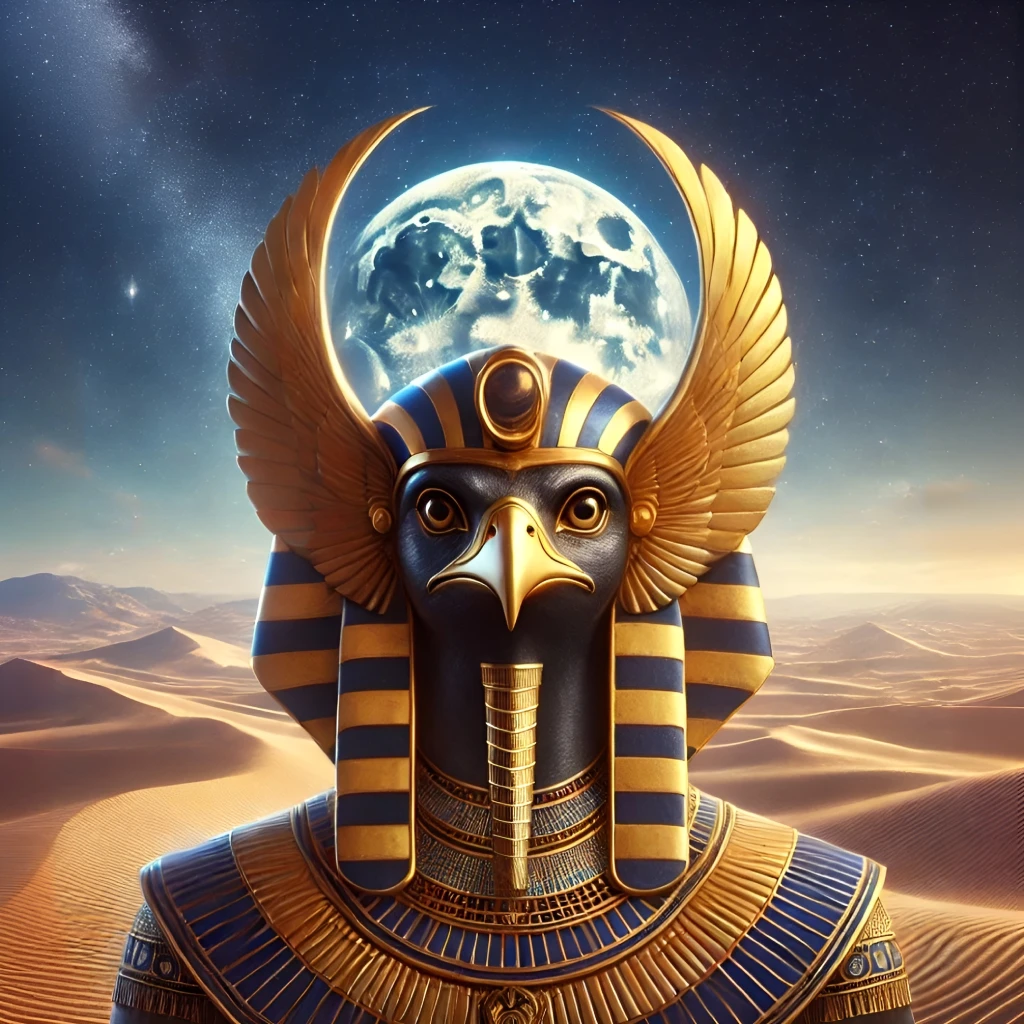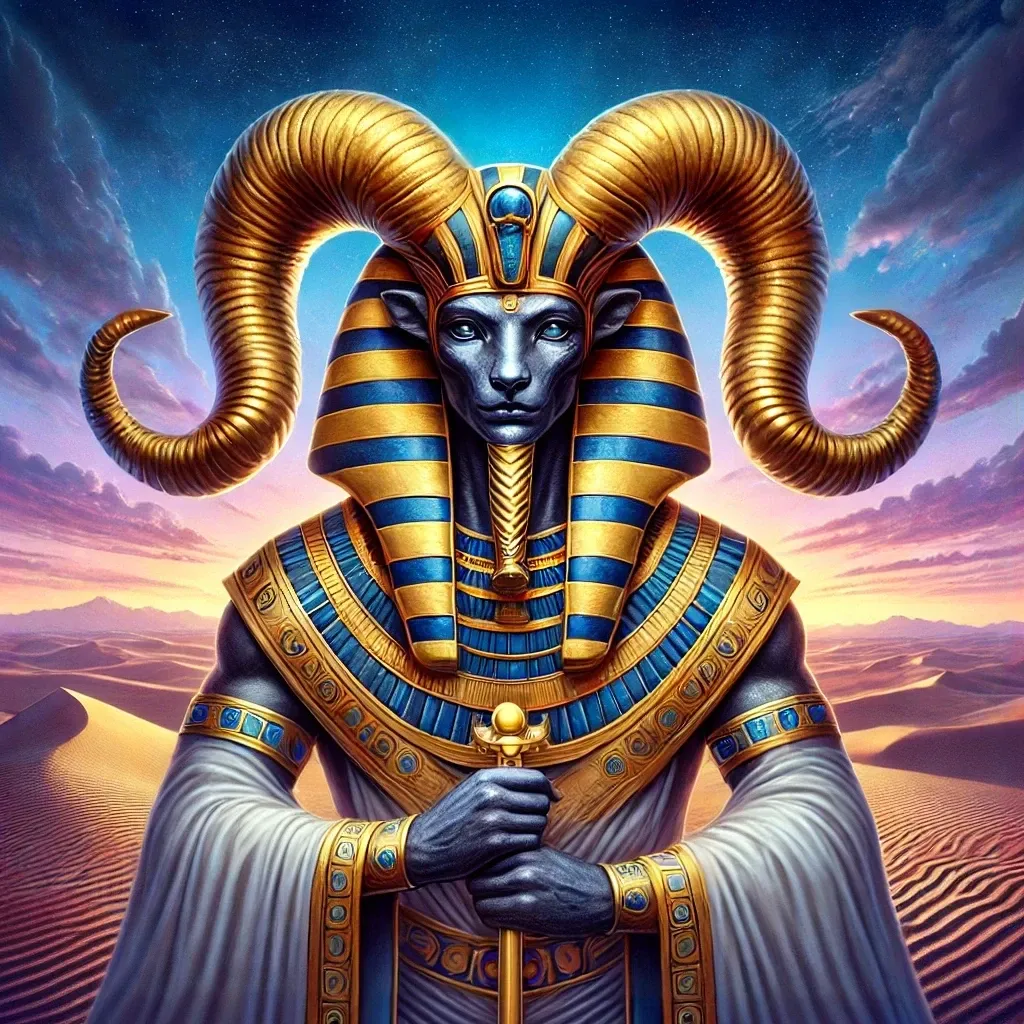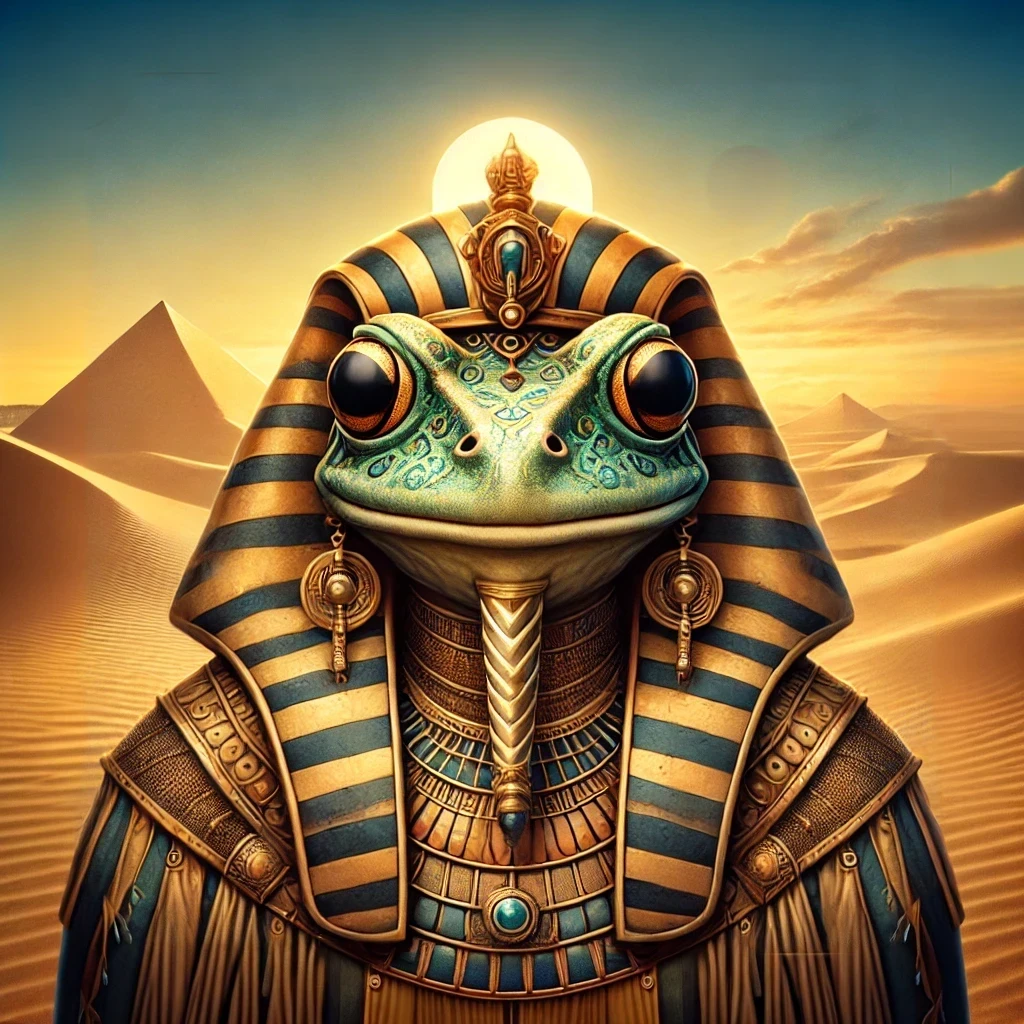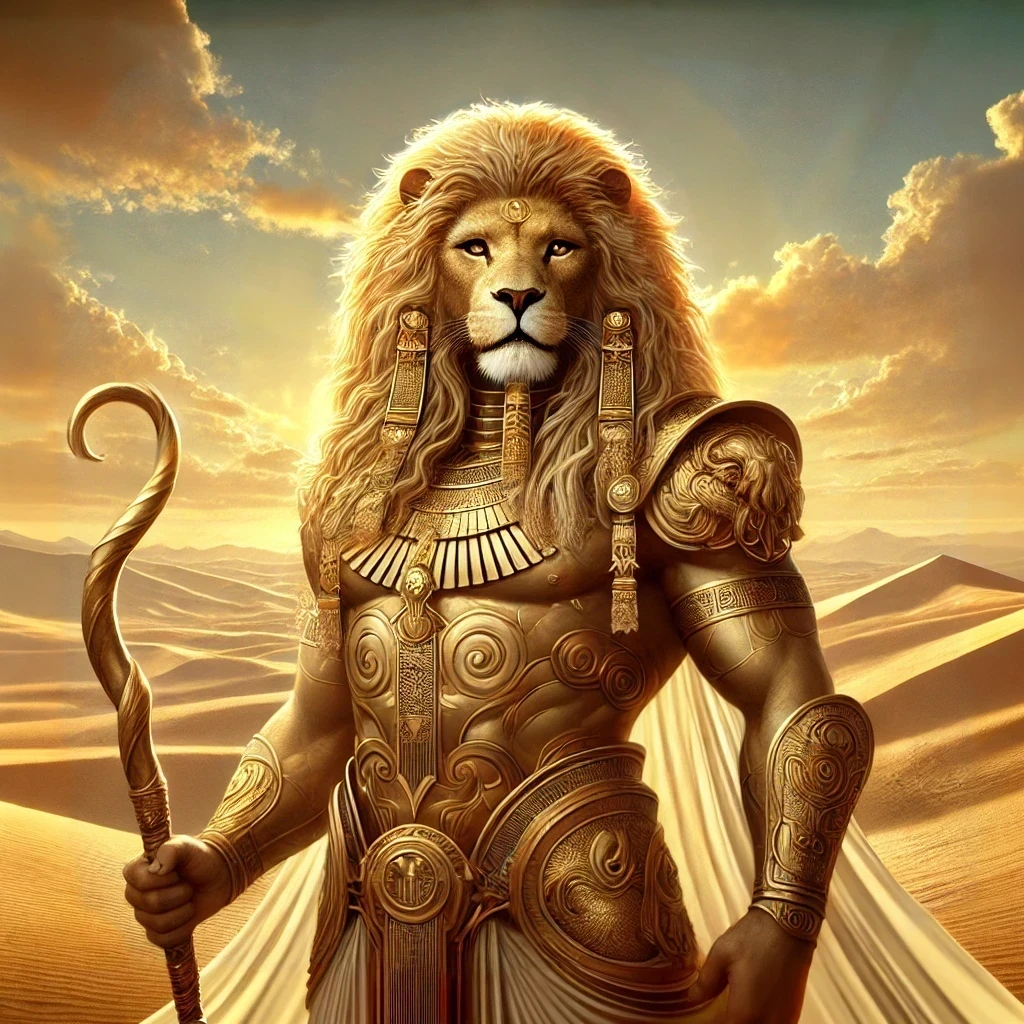The moonlit deity known as Khonsu, or Khons, was revered as the god of the moon, he was often associated with healing and timekeeping. His name, derived from the ancient Egyptian word “khensu,” meaning “traveler,” reflects his role as a celestial wanderer. Known by titles such as “The Traveler” and “He Who Embodies the Crescent Moon,” this enigmatic figure occupied a vital role in the mythos and rituals of Thebes and beyond.
Origins
The roots of Khonsu’s worship can be traced back to the early periods of Egyptian history, with significant development during the New Kingdom (1550–1069 BCE). His primary center of veneration was Thebes, where he formed part of a powerful triad alongside Amun and Mut.
Early Mentions
Khonsu’s name first appears in inscriptions during the Old Kingdom (2686–2181 BCE). Initially, his role was minor, but his prominence grew over time as lunar deities became more central to Egyptian cosmology.
Development in the New Kingdom
During the New Kingdom, Khonsu’s importance expanded significantly. The construction of his temple at Karnak, known as the Temple of Khonsu, highlights the reverence for this moon god. In this period, he was often linked with healing and timekeeping.
Appearance
The god’s depiction in Egyptian art and iconography reflects his lunar and youthful nature.
Iconography
Khonsu is frequently portrayed as a young man with a sidelock of youth, symbolizing his eternal vitality. He is crowned with a lunar disk resting on a crescent moon, emphasizing his association with the celestial body.
Variations in Representations
In some depictions, he appears mummified, holding a crook and flail, tools signifying kingship and power. This imagery aligns him with Osiris and reinforces his role as a protective and regenerative force.
Abilities
Khonsu’s powers extend across multiple domains, from celestial movements to human well-being.
Lunar Influence
As a lunar deity, he governed the moon’s phases, which were vital for Egyptian calendars and agricultural cycles. His association with time made him a guardian of order and stability.
Healing Powers
Known as a powerful healer, Khonsu was invoked in rituals to cure ailments. The healing spells of ancient texts frequently cite him, underscoring his reputation as a restorer of health.
Protective Qualities
Khonsu’s protective attributes are evident in his role as a guardian against evil spirits. Travelers and soldiers sought his blessings for safe journeys and victories.
Myths
The narratives surrounding this lunar god highlight his significance in Egyptian mythology.
The Contender of Light
In a notable tale, Khonsu is said to have played a key role in a celestial game with Thoth, another moon god, to determine the division of lunar time. This myth reflects his connection to cosmic balance.
The Banisher of Demons
Another myth portrays him as a fierce protector who banished malevolent spirits from Egypt. This story reinforced his role as a divine guardian.
Symbolism
Khonsu’s symbolism weaves through various aspects of Egyptian life and spirituality, from lunar cycles to personal well-being.
The Moon
The crescent moon and lunar disk are his primary symbols, representing the passage of time and the cyclical nature of life.
Youth and Vitality
The sidelock of youth symbolizes his perpetual energy and connection to rejuvenation, making him a patron of health and vitality.
Associated Objects and Elements
Objects like the crook and flail underline his protective and authoritative roles, while his connection to silver, a metal often linked to the moon, highlights his celestial nature.
Relationships
Khonsu’s integration into the Egyptian pantheon connects him with prominent gods and mortals alike.
The Theban Triad
- Amun: As his divine father, Amun’s status as king of the gods elevated Khonsu’s significance.
- Mut: His mother, Mut, represented the nurturing aspect of the triad, complementing his youthful vigor.
Interactions with Other Deities
Khonsu’s association with Thoth, another moon god, is noteworthy. While Thoth symbolizes wisdom, their shared lunar domain emphasizes cosmic harmony.
Trivia
- Temple of Healing: Inscriptions from the Temple of Khonsu at Karnak detail rituals invoking his healing powers, demonstrating his role in medicine.
- Traveler’s Protector: Ancient Egyptians often sought his favor before embarking on journeys, earning him the epithet “Protector of Wayfarers.”
- Lunar Rivalry: Myths occasionally pit him against other deities in contests of wit, showcasing his competitive yet harmonious nature.
- Pharaoh’s Connection: Some New Kingdom pharaohs dedicated personal shrines to him, underscoring his royal patronage.
- Modern Legacy: His temple remains a significant archaeological site, attracting scholars and visitors interested in ancient Egyptian religion.



